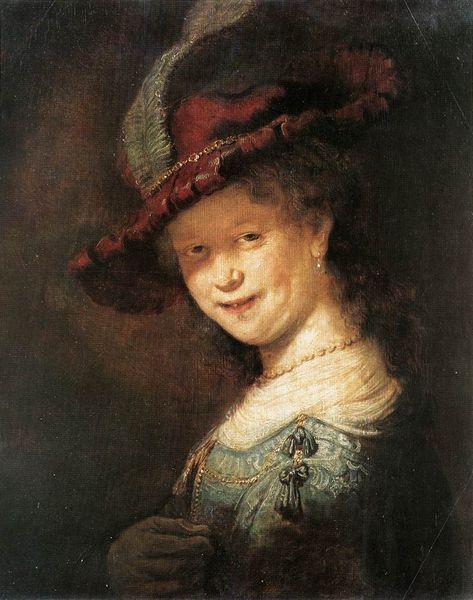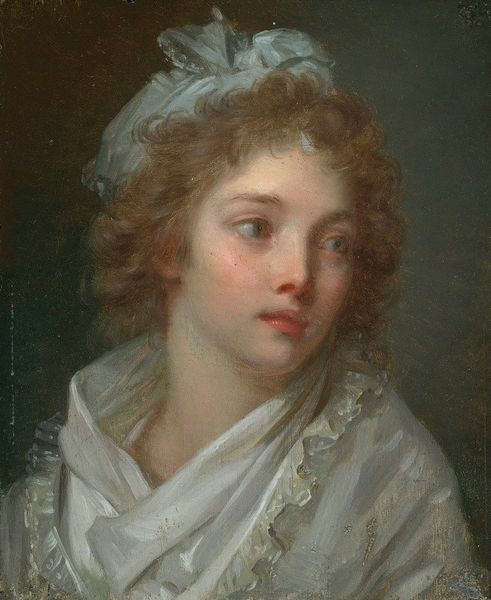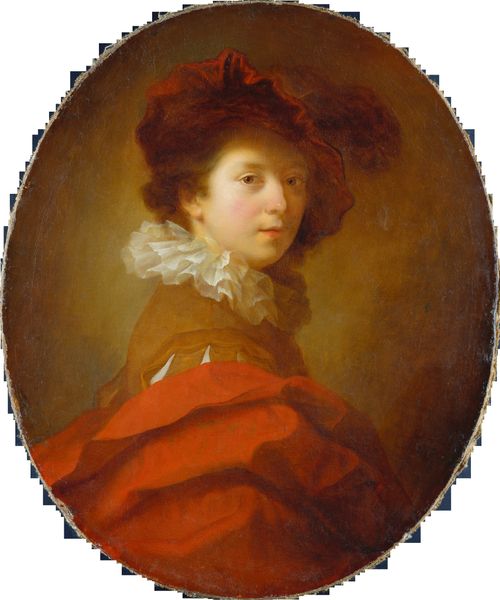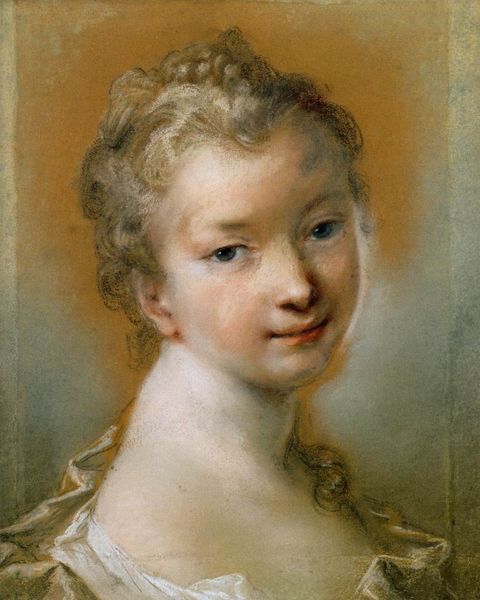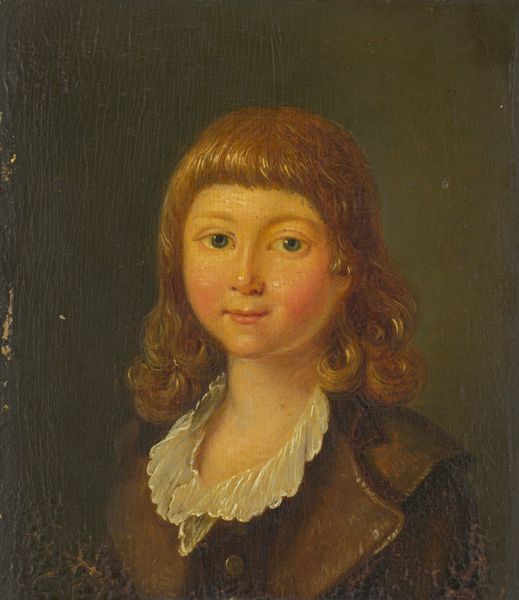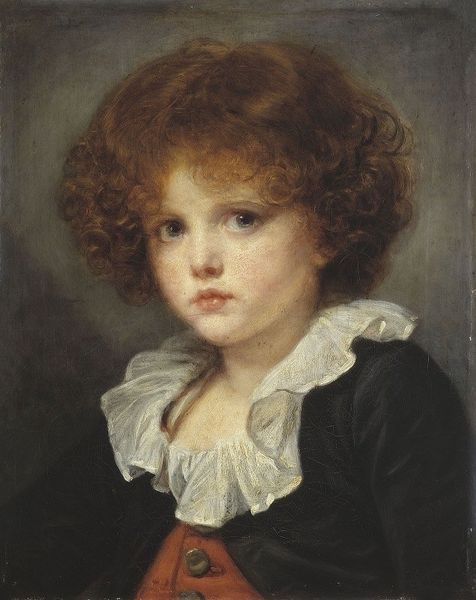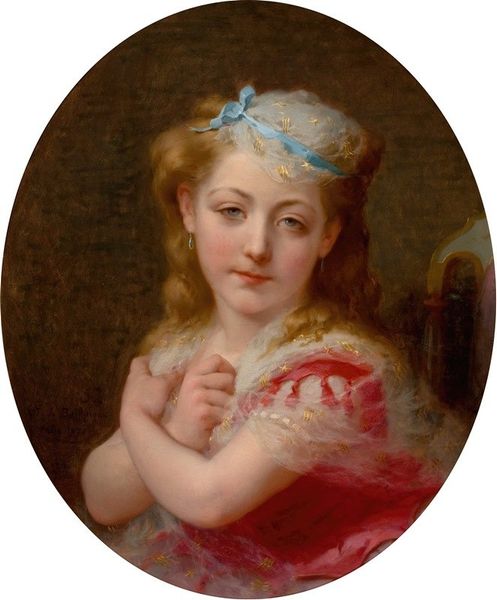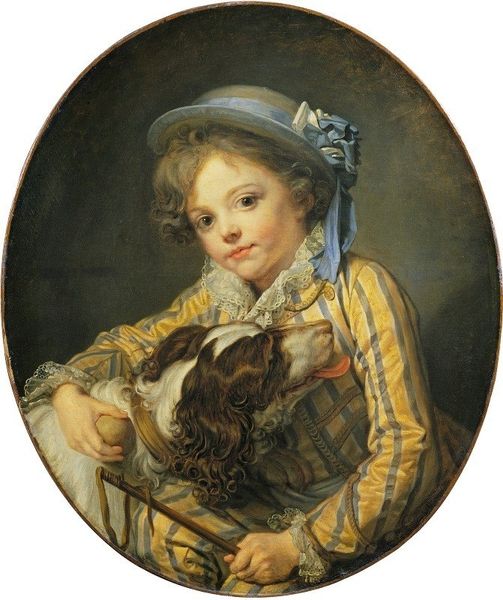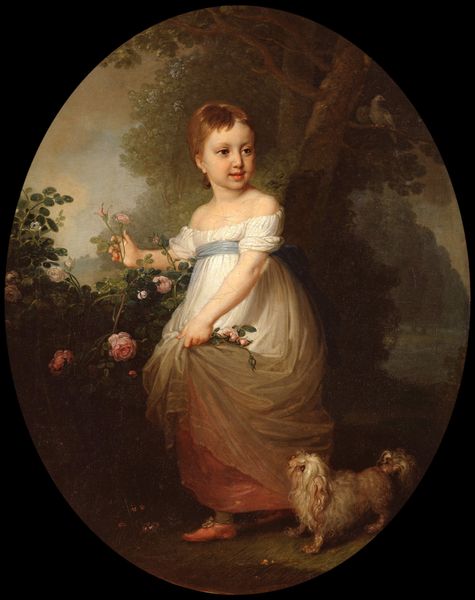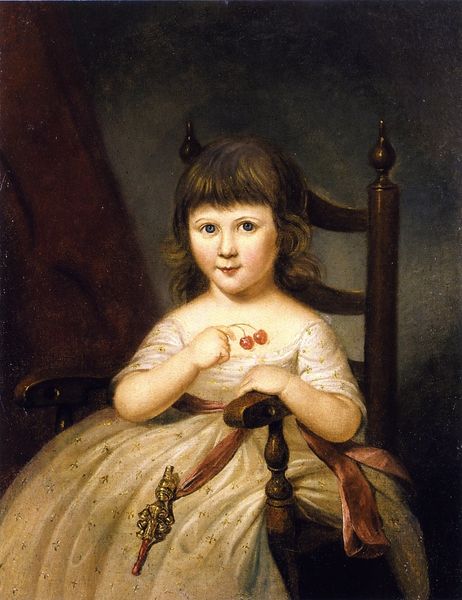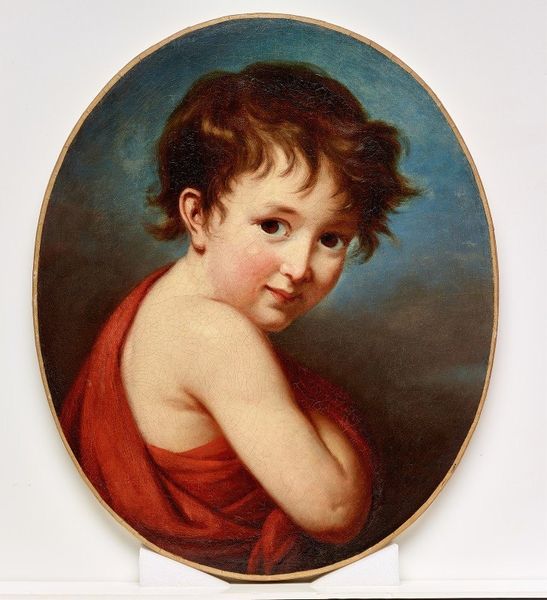
Copyright: Public Domain: Artvee
Editor: Here we have Elisabeth Louise Vigée Le Brun's "Portrait of a Girl," painted with oil on canvas sometime between 1788 and 1790. What stands out to me is the material richness – the textures in the fur, the sheen of the velvet. What do you see in this piece, focusing on its material aspects and perhaps the social context of its creation? Curator: Indeed, focusing on materiality is key here. Note the lusciousness of the oil paint itself, mimicking the costly fabrics depicted. Vigée Le Brun, as a woman artist in a patriarchal system, achieved prominence through portraiture, largely of wealthy aristocrats, before the revolution. These materials--velvet, fur, the oil paint itself—speak volumes about the social strata involved in both production and consumption of art. How does the very application of paint, the labor of creating this illusion, reflect or challenge the Rococo style typically associated with leisure and excess? Editor: That’s fascinating! The detail really does show an intense amount of labor and access to specific materials, highlighting her patron's wealth. The portrait isn’t overtly opulent like some Rococo pieces, which makes me wonder if that's her subtle comment about societal expectations? Curator: Precisely. By slightly toning down overt extravagance, she navigates the complex terrain of class representation. Look closely – can you discern anything about the source of her pigments? Is she using the vibrant blues derived from ultramarine? Editor: Wow, I do see some brighter blues around her coat; what would that suggest if she did use the brighter blues? Curator: It underscores access to expensive materials and further complicates the message of wealth and status construction, particularly at a time of growing social unrest in pre-revolutionary France. By understanding what these materials are and what they signify, we have so much better of an understanding of the world around them. Editor: So true. Focusing on materiality really reveals a network of production, consumption, and social positioning at a pivotal point in history. I definitely learned so much about interpreting the messages behind paintings. Curator: Yes, Materiality brings us so much closer to history! It encourages us to probe beneath the surface of representation.
Comments
No comments
Be the first to comment and join the conversation on the ultimate creative platform.
